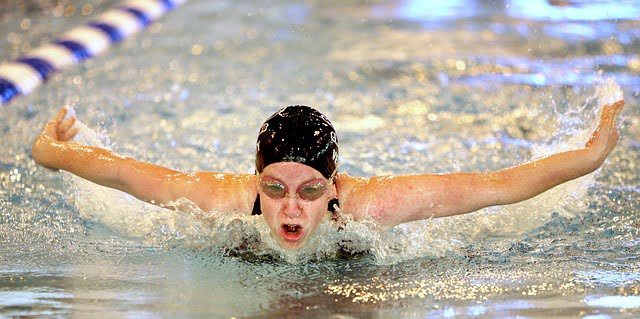Up next in our four-part series of physical therapy and performance training articles for swimmers is what most deem the most physically demanding stroke – the butterfly!
Mastering this stroke requires a blend of technique, endurance, and mental focus. Like breaststroke, the butterfly is another bilateral stroke, requiring a cyclical pull, recovery, and body undulation. The timing of the stroke is often what tricks new swimmers and the upper body strength required to get both arms above the plane of the water simultaneously. Butterfly requires strong and powerful shoulder extension and adduction and enough lumbar and thoracic spine extension to power through each stroke.
If you’re a physical therapy or performance training nerd like us and want to know all of the muscles primarily used in butterfly…here, they are! But, if you just wish to know what you should do to improve your performance in the water or address an injury, skip this section to see the videos below!
Upper body:
- Deltoids and Pectorals: As swimmers extend their arms forward and outward, the deltoids initiate the motion, while the pectorals provide additional power during the pull phase. These muscles work in tandem to initiate the pull-through.
- Latissimus Dorsi: During the butterfly stroke, the lats play a crucial role in the pull phase, generating power as the arms sweep downward and outward. Strong lats provide the driving force behind each stroke, allowing swimmers to maintain momentum and glide through the water with fluidity.
- Upper traps and Rotator Cuff: To start the butterfly pull, the arms must recover over the head. The upper traps and supraspinatus are responsible for the shrugging motion that brings your arms over the water for the proper starting position. The rotator cuff muscles also play a crucial role in maintaining shoulder stability when overhead.
Lower body:
- Quadriceps and Hamstrings: The quadriceps at the front of the thighs and the hamstrings at the back work together to execute the simultaneous kicking motion characteristic of the dolphin kick. As swimmers kick from the hips, these muscles generate force, driving the legs up and down in a coordinated rhythm. The hamstrings work in the opposite direction, enabling swimmers to maintain a steady kick throughout the stroke, maximizing speed and efficiency in the water. Both muscles are responsible for an effective “up beat” AND “down beat” kick.
- Gluteal Muscles: The gluteal muscles, including the gluteus maximus, medius, and minimus, provide additional power and stability during butterfly swimming. These muscles support the hips and pelvis, allowing for a smooth and controlled kicking motion and appropriate amounts of hip extension for a powerful kick up-beat.
- Core Muscles: The core muscles, including the rectus abdominis, obliques, and transverse abdominis, provide stability and balance as swimmers move through the water. These muscles engage to maintain a streamlined body position and facilitate the undulating motion characteristic of the butterfly stroke. A strong core also helps transfer power from the upper body to the lower body, maximizing propulsion with each stroke.
Due to the heavy demand on the upper body and upper back, shoulder injuries are commonly seen in physical therapy for butterfliers. Ensuring proper strength of the rotator cuff, back, and chest muscles is crucial to prevent overuse injuries and appropriately manage the force required to swim an effective butterfly. Additionally, mobility through the cervical and thoracic spine is essential to avoid the need to compensate and put more stress elsewhere.
To target or prevent shoulder and back pain caused by swimming butterfly, implement the following exercises into your strengthening program:
1. Rotator cuff stabilizing drills: targets overhead strength
2. Plank variations: targets dynamic shoulder stability and core strength
If you are a swimmer looking for ways to optimize your performance in the water or address an injury in physical therapy, contact us to learn how much more you can do to step up your game!
